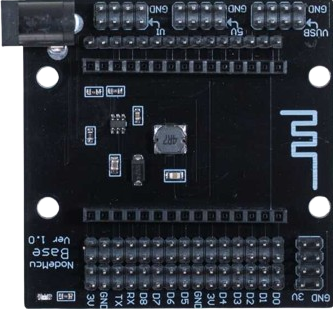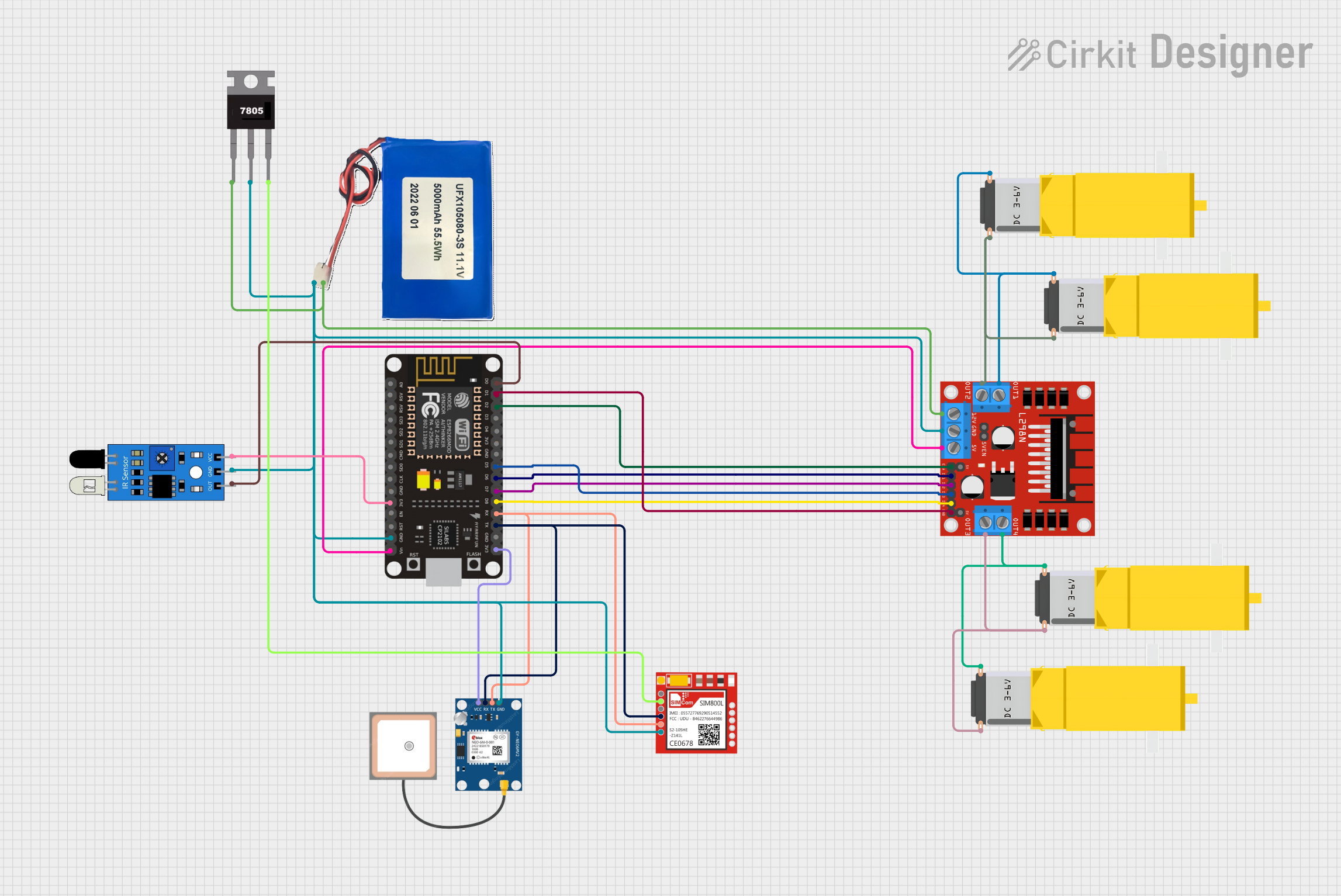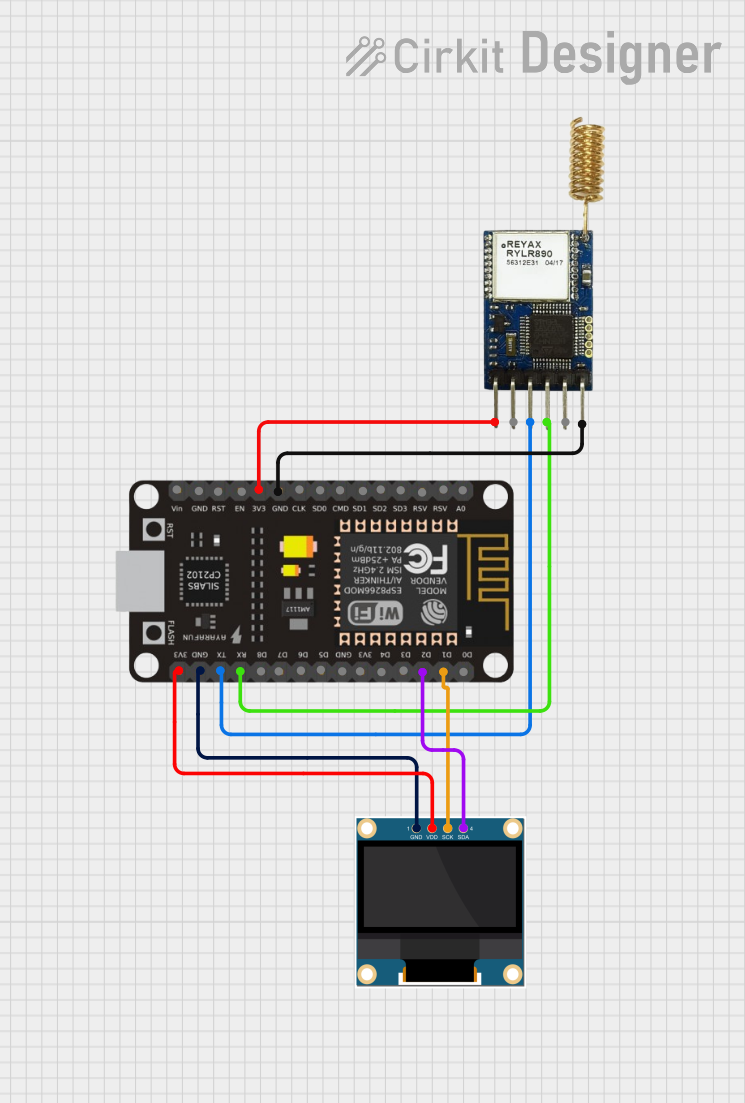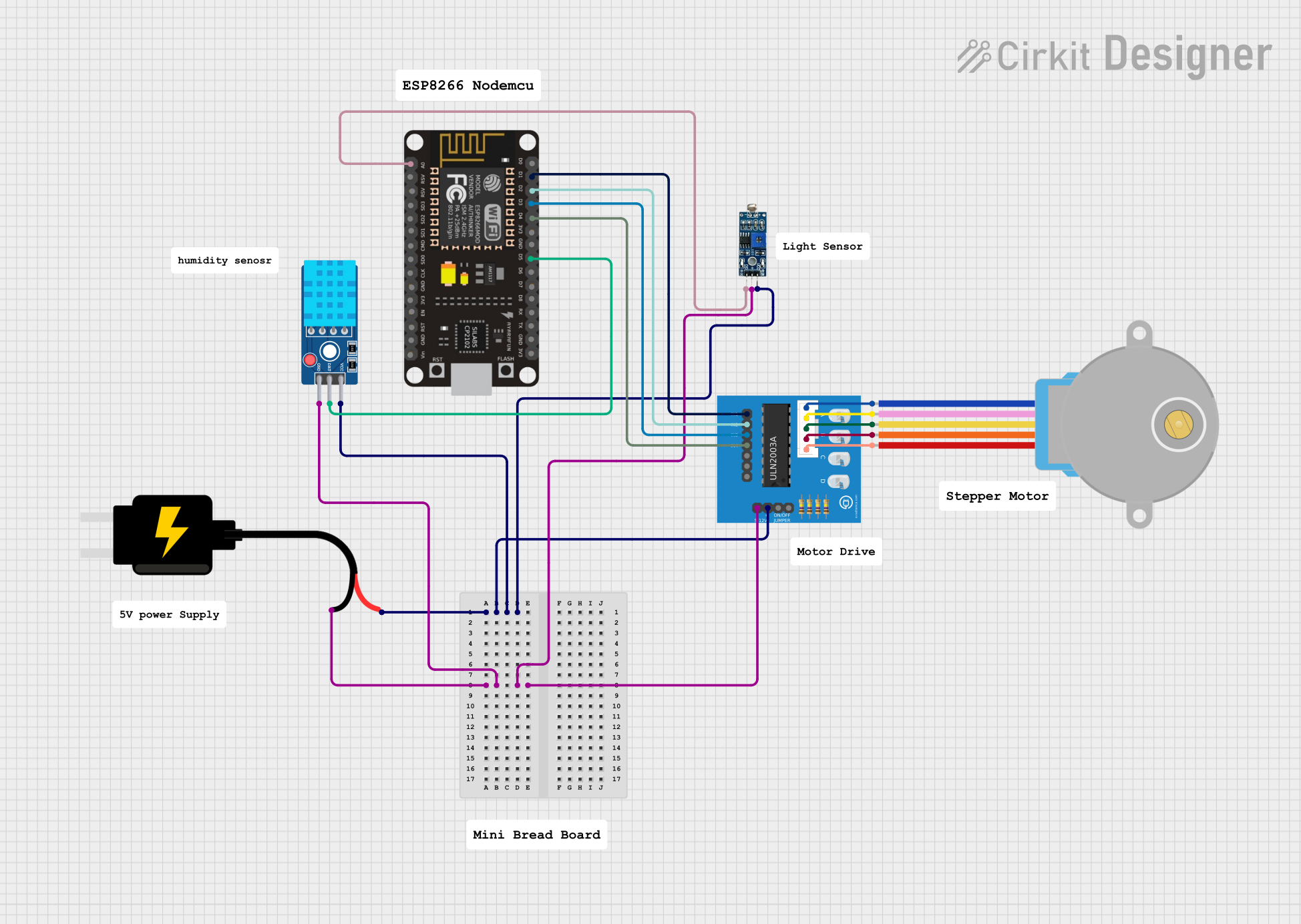
How to Use nodemcu8266 lolin basboard: Examples, Pinouts, and Specs

 Design with nodemcu8266 lolin basboard in Cirkit Designer
Design with nodemcu8266 lolin basboard in Cirkit DesignerIntroduction
The NodeMCU8266 Lolin Baseboard, manufactured by ESP, is a development board based on the ESP8266 Wi-Fi module. It is designed for IoT (Internet of Things) applications, offering a compact and versatile platform for wireless connectivity. The board integrates a USB-to-serial interface, making it easy to program and debug. It is widely used for prototyping smart home devices, wireless sensors, and other IoT projects.
Explore Projects Built with nodemcu8266 lolin basboard

 Open Project in Cirkit Designer
Open Project in Cirkit Designer
 Open Project in Cirkit Designer
Open Project in Cirkit Designer
 Open Project in Cirkit Designer
Open Project in Cirkit Designer
 Open Project in Cirkit Designer
Open Project in Cirkit DesignerExplore Projects Built with nodemcu8266 lolin basboard

 Open Project in Cirkit Designer
Open Project in Cirkit Designer
 Open Project in Cirkit Designer
Open Project in Cirkit Designer
 Open Project in Cirkit Designer
Open Project in Cirkit Designer
 Open Project in Cirkit Designer
Open Project in Cirkit DesignerCommon Applications and Use Cases
- Home automation systems
- Wireless data logging
- IoT-enabled appliances
- Remote monitoring and control
- Prototyping Wi-Fi-enabled devices
Technical Specifications
Key Technical Details
- Microcontroller: ESP8266
- Operating Voltage: 3.3V
- Input Voltage (via USB): 5V
- Digital I/O Pins: 11
- Analog Input Pins: 1 (10-bit ADC)
- Flash Memory: 4MB
- Wi-Fi Standard: 802.11 b/g/n
- USB Interface: CH340G USB-to-serial converter
- Dimensions: 58mm x 31mm
Pin Configuration and Descriptions
The NodeMCU8266 Lolin Baseboard has a total of 30 pins. Below is the pinout description:
| Pin Name | Type | Description |
|---|---|---|
| VIN | Power Input | External power input (5V). |
| 3V3 | Power Output | 3.3V output from the onboard regulator. |
| GND | Ground | Ground connection. |
| D0-D8 | Digital I/O | General-purpose digital input/output pins. |
| A0 | Analog Input | Analog input pin (0-1V range). |
| TX | UART TX | Transmit pin for serial communication. |
| RX | UART RX | Receive pin for serial communication. |
| EN | Enable | Chip enable pin. Active high to enable the module. |
| RST | Reset | Resets the microcontroller when pulled low. |
| GPIO16 | Wake-up Pin | Can be used for deep sleep wake-up. |
Usage Instructions
How to Use the Component in a Circuit
Powering the Board:
- Connect the board to your computer via a micro-USB cable for power and programming.
- Alternatively, supply 5V to the VIN pin and GND for external power.
Programming the Board:
- Install the Arduino IDE and add the ESP8266 board package via the Board Manager.
- Select "NodeMCU 1.0 (ESP-12E Module)" as the board type.
- Connect the board to your computer and select the appropriate COM port.
Connecting Peripherals:
- Use the digital pins (D0-D8) for connecting sensors, actuators, or other devices.
- Use the A0 pin for analog sensors (ensure the input voltage does not exceed 1V).
Important Considerations and Best Practices
- Voltage Levels: The GPIO pins operate at 3.3V. Avoid applying 5V directly to the pins to prevent damage.
- Wi-Fi Antenna: Ensure the onboard antenna is not obstructed for optimal Wi-Fi performance.
- Deep Sleep Mode: Use GPIO16 to wake the board from deep sleep for low-power applications.
- Pull-up Resistors: Some pins (e.g., D3, D4) have internal pull-up resistors. Be cautious when connecting external components.
Example Code for Arduino IDE
Below is an example code to connect the NodeMCU8266 Lolin Baseboard to a Wi-Fi network and print the IP address:
#include <ESP8266WiFi.h> // Include the ESP8266 Wi-Fi library
const char* ssid = "Your_SSID"; // Replace with your Wi-Fi network name
const char* password = "Your_Password"; // Replace with your Wi-Fi password
void setup() {
Serial.begin(115200); // Initialize serial communication at 115200 baud
delay(10);
Serial.println();
Serial.println("Connecting to Wi-Fi...");
WiFi.begin(ssid, password); // Start Wi-Fi connection
while (WiFi.status() != WL_CONNECTED) {
delay(500); // Wait for connection
Serial.print(".");
}
Serial.println();
Serial.println("Wi-Fi connected!");
Serial.print("IP Address: ");
Serial.println(WiFi.localIP()); // Print the assigned IP address
}
void loop() {
// Add your main code here
}
Troubleshooting and FAQs
Common Issues and Solutions
Board Not Detected by Computer:
- Ensure the USB cable is functional and supports data transfer.
- Install the CH340G driver if the board is not recognized.
Wi-Fi Connection Fails:
- Double-check the SSID and password.
- Ensure the Wi-Fi network is within range and not using unsupported security protocols.
Upload Errors in Arduino IDE:
- Select the correct board and COM port in the Arduino IDE.
- Press and hold the "Flash" button on the board while uploading the code.
Analog Readings Are Inaccurate:
- Ensure the input voltage to the A0 pin is within the 0-1V range. Use a voltage divider if necessary.
FAQs
Q: Can I power the board with a battery?
A: Yes, you can use a 3.7V LiPo battery connected to the VIN and GND pins.Q: What is the maximum current output of the 3V3 pin?
A: The 3V3 pin can supply up to 500mA, depending on the input power source.Q: Can I use the board without Wi-Fi?
A: Yes, the board can function as a standalone microcontroller without using Wi-Fi.Q: How do I reset the board?
A: Press the "RST" button or pull the RST pin low to reset the board.
This documentation provides a comprehensive guide to using the NodeMCU8266 Lolin Baseboard effectively. For further assistance, refer to the official ESP documentation or community forums.